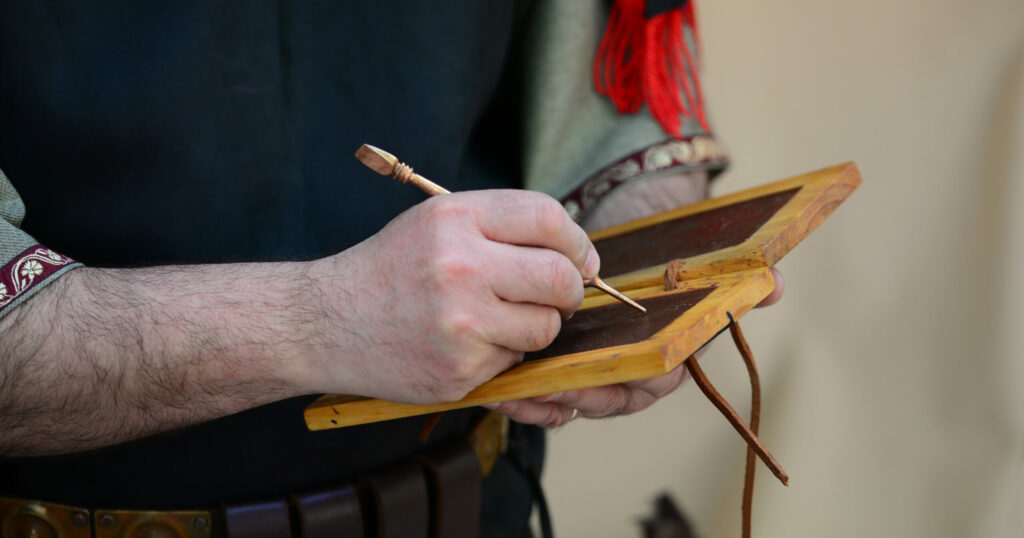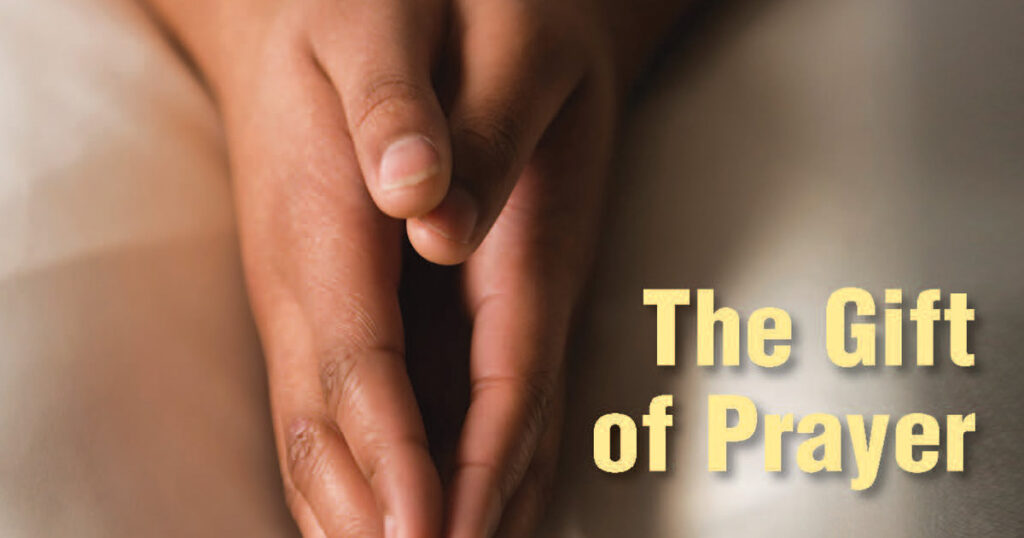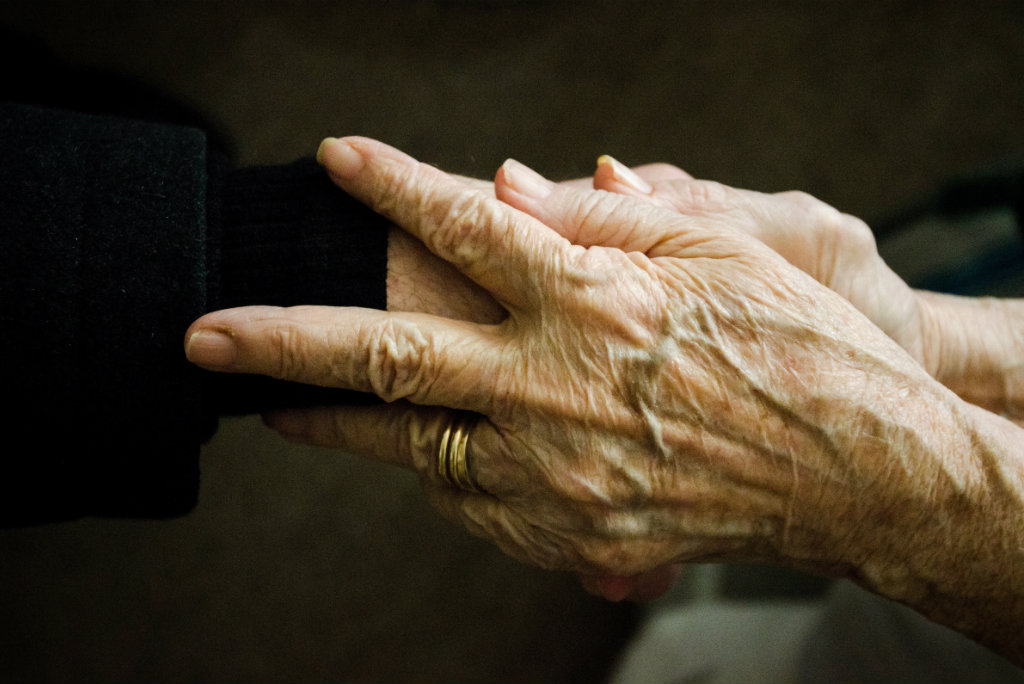by Matthew C. Harrison
Years ago, I noted in the writings and correspondence of the famous Lutheran Hermann Sasse (1895–1976) the recurrent mention of the word “diptych” (pronounced DIP-tich) when he wrote about his prayer life. For instance, in a letter to Bavarian Lutheran Bishop Hermann Dietzfelbinger, Sasse concluded a letter: “Well, this letter is already too long. Besides that, I’m suffering my mid-afternoon fever, and I must stop work. Your diptychs are surely long, but if there is still room, please don’t exclude my name.”
He used the word “diptych” more figuratively in 1967, when he wrote to J.A.O. Preus after receiving an honorary doctorate from Concordia Theological Seminary, then in Springfield:
The doctorate I have received from you I regard as a high responsibility. I shall always be one of you, so may God me help, joined with you in the same obligation to teach the Word of God, to be faithful to the doctrine of the Church as confessed in the Book of Concord. Whether we shall meet on this earth again, God alone knows. But Concordia Springfield is firmly written on the diptychs of my heart.
Sasse also wrote to a friend in 1960: “Please be not angry with me. I am almost drowning in work. But I have been thinking much of you. You are on my diptychs.”
From these and many other diptych references by Sasse, I realized that he kept a list of people for whom he prayed daily, and he never failed to ask his friends and correspondents to add him to their prayer list.
Diptych comes from the Greek, “to fold twice.” In the ancient world, it meant two tablets joined so they fold together. The tablets were covered lightly with wax, and a stylus was used to write on them. Archaeologists have discovered many such tablets used in the ancient Roman world, some even with writing on the wax still legible. The church began to use these tablets at the Divine Service for “the prayers.”
I write “the prayers,” based on Acts 2:42. “And they devoted themselves to the apostles’ teaching and the fellowship, to the breaking of bread and the prayers.” “The fellowship” likely refers to the gathering and sharing of food for the needy among the believers (Acts 6), though the word (koinonia) is certainly also used in the New Testament for the common unity brought about by Christ who is present in Word and Sacrament (1 Cor. 10:16–17; 1 John 1). “The breaking of bread” is certainly the Lord’s Supper. And “the prayers” were a regular set practice during church. Paul’s list of people at the end of Romans, for instance, may well be from lists he kept of people for whom he prayed daily (so Sasse believed). The Pauline encouragement to greet so and so with a “holy kiss,” (Rom. 16:16; 1 Cor. 16:20; 2 Cor. 13:12; 1 Thess. 5:26) indicates how closely the proto[1]diptych was tied to church and altar fellowship.
The diptychs came to include prayers for those in various needs and for governing officials. First Timothy 2:1–8 seems to place these prayers in the Divine Service. In A.D. 60 when Paul wrote Timothy, it was clear that Emperor Nero wasn’t exactly a paragon of virtue. How ironic that the very guy for whom all Christians prayed during their assemblies would martyr Peter and Paul just a few years later. “Pray for those who persecute you,” Jesus commanded, and so they did.
Over time, other additions to the diptych were made. Bishops and pastors with whom the church was in fellowship were listed in the diptych, and so such prayers were a vital way to publicly confess a congregation’s orthodoxy and church fellowship with other orthodox bishops and people. Just like today, there were many various more or less heretical or schismatic “denominations.” Unfortunately, by the time of Cyril of Jerusalem (d. 386), prayers for the deceased were slipped into the diptych.
Today standard LCMS practice mirrors the ancient church in many ways, though excluding the prayers for the dead. Our congregations’ altar prayers should regularly include prayers for neighboring pastors and congregations, for districts and district presidents, and also for yours truly. First Peter 5:8 conjures up visions of Gethsemane, when St. Peter and the others failed to keep watch with Jesus in prayer: “Be sober-minded; be watchful. Your adversary the devil prowls around like a roaring lion, seeking someone to devour.” I can’t tell you how much it means to know that faithful people, whole congregations in fact, are praying for their pastors, their district leaders, even their Synod and its president. In some very tough moments, I have found it humbling beyond belief to know that I am being carried by the prayers of thousands upon thousands.
Just as the congregation used the diptych to pray for public needs of the congregation, individuals began to use these prayer tablets in the home. It’s no wonder. Apostolic admonitions to prayer are numerous in the Bible. These are grounded in Christ’s own example and admonition. Individually owned diptychs have been unearthed in Rome, one of which bears the owner’s name, “Gallienus Concessus.”
Shortly after I was elected LCMS president in 2010, I stayed in the Berlin home of the retired Bishop Jobst Schöne of our German sister church, the Independent Evangelical Lutheran Church of Germany (SELK). In his study was a well-worn kneeler, Bible open, pages transparent from handling, next to a candle burnt to a mere pool of wax. I was cut to the heart. I thought: “I need to learn how to pray.” When I returned home, I built a prayer kneeler and placed it in my office at the LCMS International Center. And then I began posting lists on the kneeler.
Urged on by Sasse and Schöne, I began making lists. My diptychs are sticky notes. In addition to praying the psalms, the Lord’s Prayer and perhaps the Litany (a descendent of the diptychs), I began praying through my sticky note “diptych.” Wife, family, parents, children, employees, persons, events, pastors, crises, districts, district presidents, Council of Presidents, institutions, seminaries, presidents, challenges, heartbreaks, suffering and so on.
What’s been the result of my diptych? Surprise. Some prayers the Lord answers as He answered St. Paul: “My power is made perfect in weakness” (2 Cor. 12:9). And so I say with Christ, “Lord if thou will, take this cup of suffering from me or so-and-so, yet not my will, but Thine be done.” But quite frankly, over time I began to notice how God answers prayer. Person after person, situation after situation, crises after crises have more often than not been resolved or otherwise worked for obvious good. I’m quite sure the Lord Christ has always answered my prayer this way. He most often showers us with blessings “even without our prayer.” Praying with a diptych has allowed this sinner to clearly see Christ’s myriad blessings, “to realize this and to receive his daily bread with thanksgiving.”
Finally, brothers, pray for us, that the word of the Lord may speed ahead and be honored, as happened among you, and that we may be delivered from wicked and evil men. For not all have faith. But the Lord is faithful. He will establish you and guard you against the evil one. And we have confidence in the Lord about you, that you are doing and will do the things that we command. May the Lord direct your hearts to the love of God and to the steadfastness of Christ. (2 Thess. 3:1–5)
–Pastor Harrison





